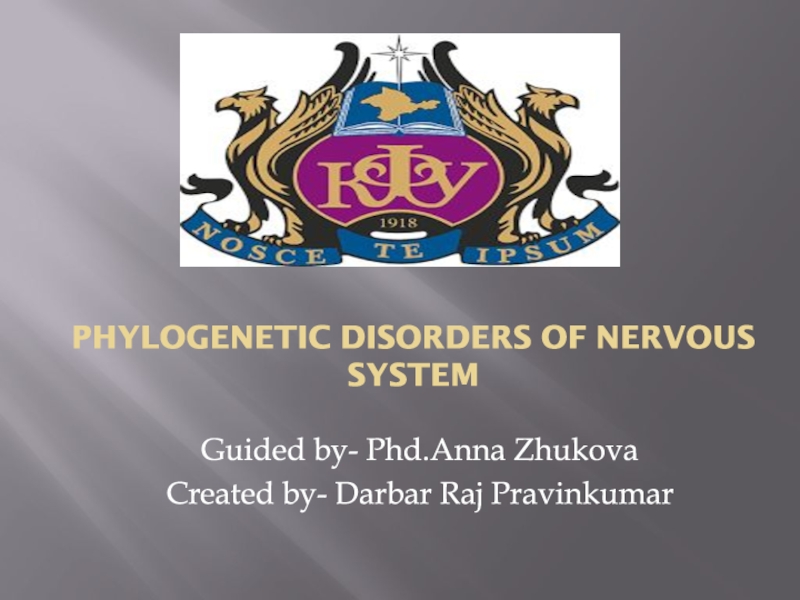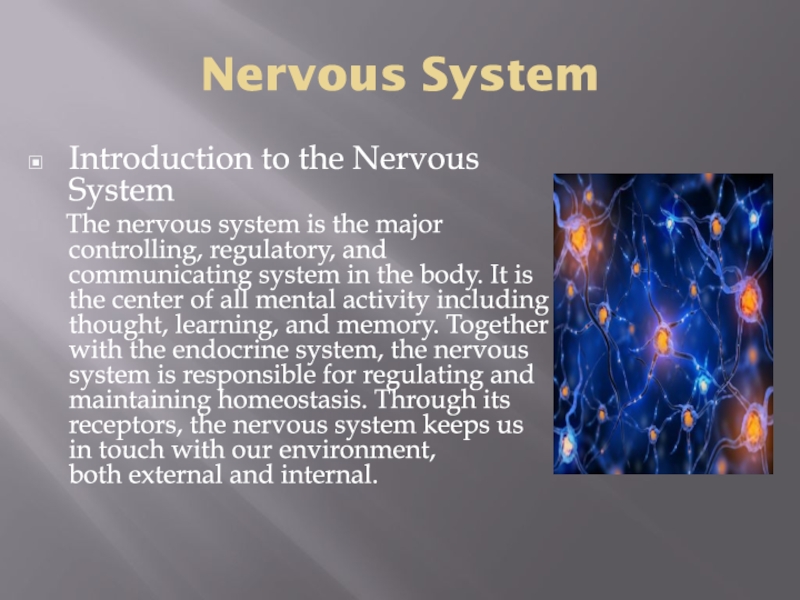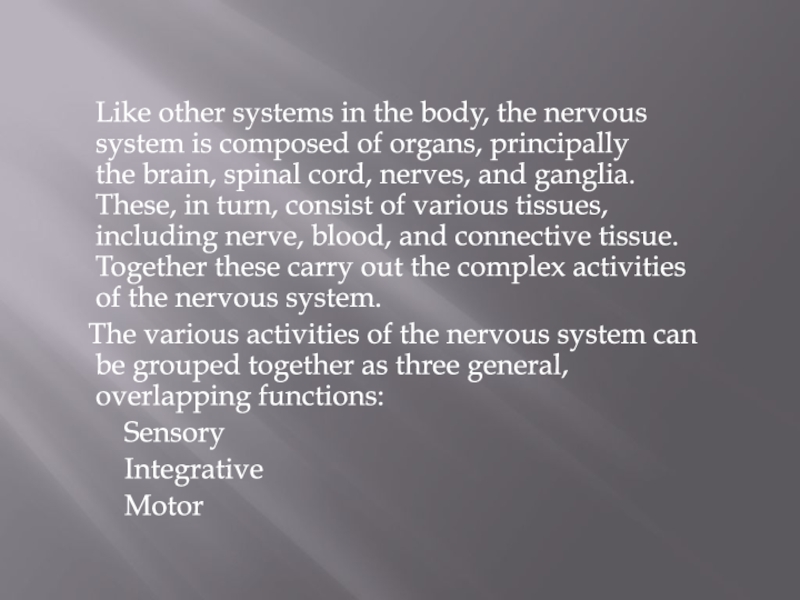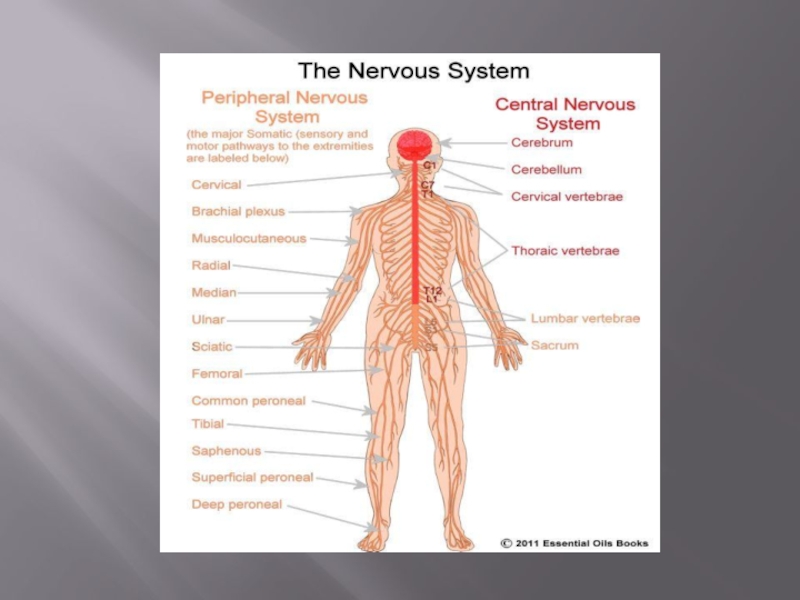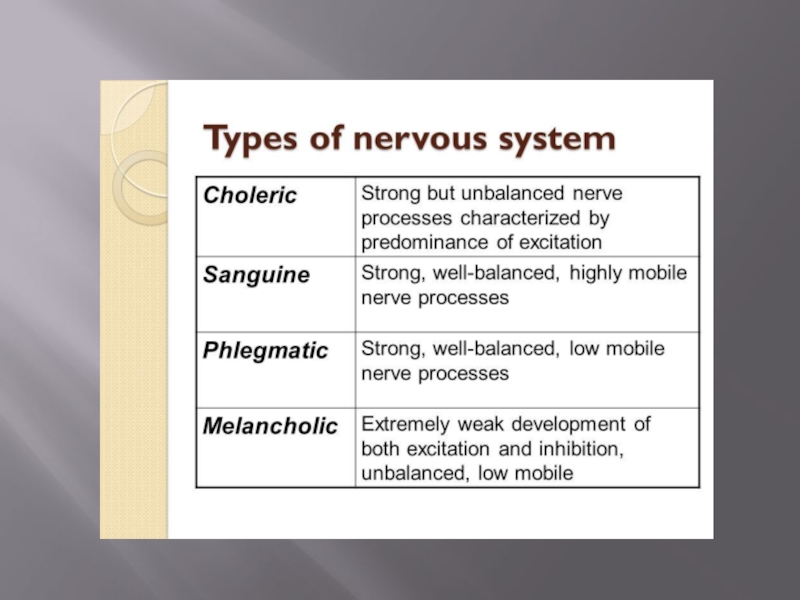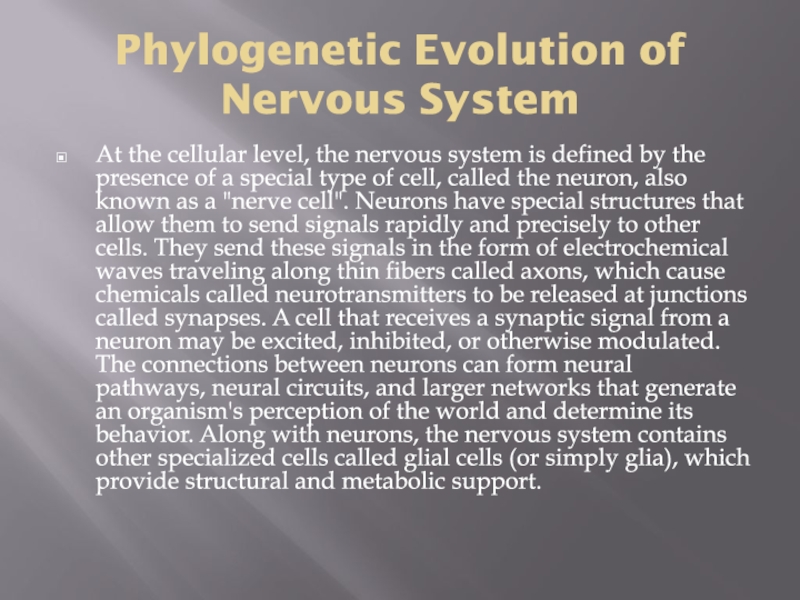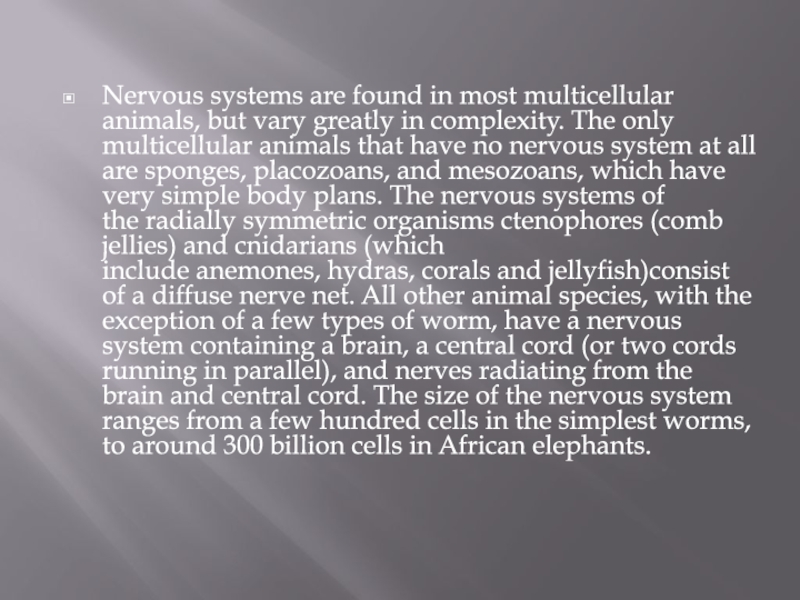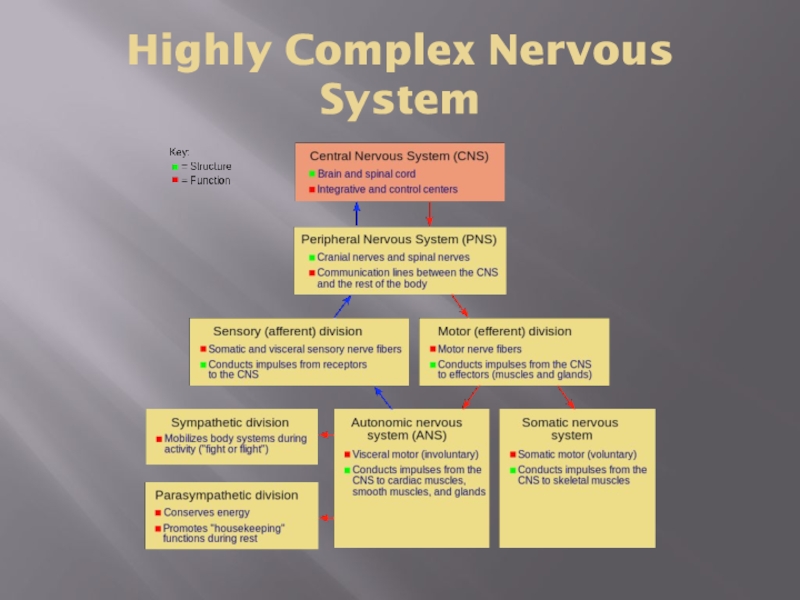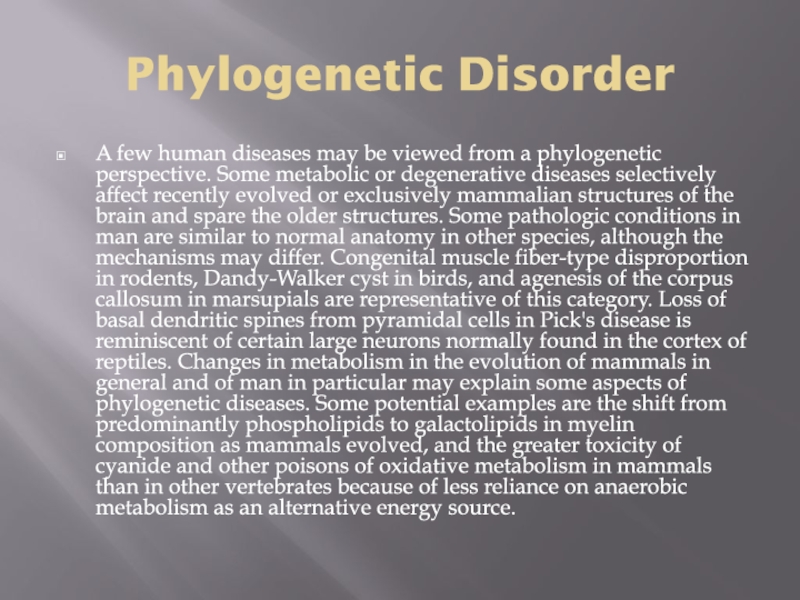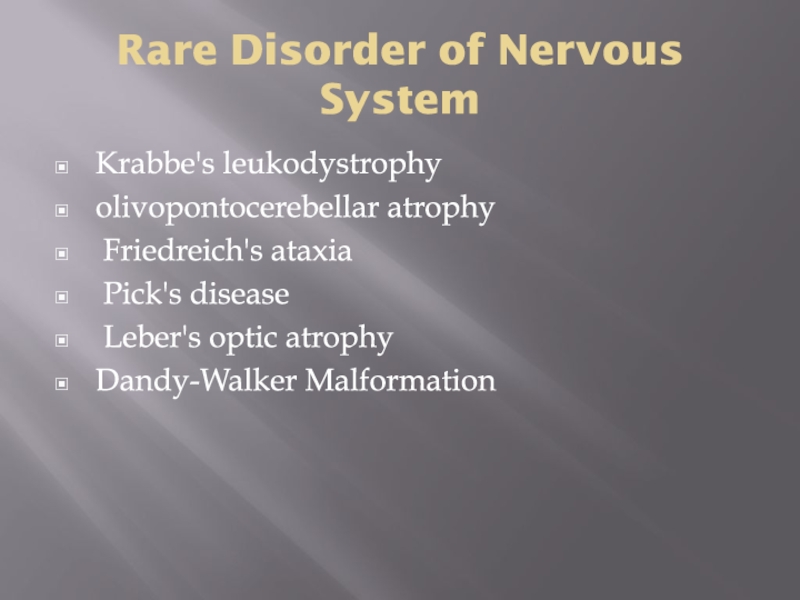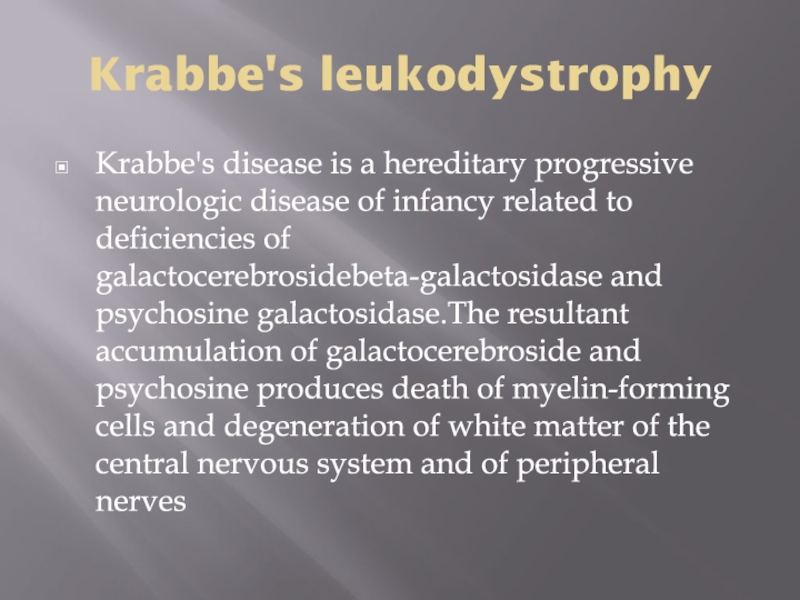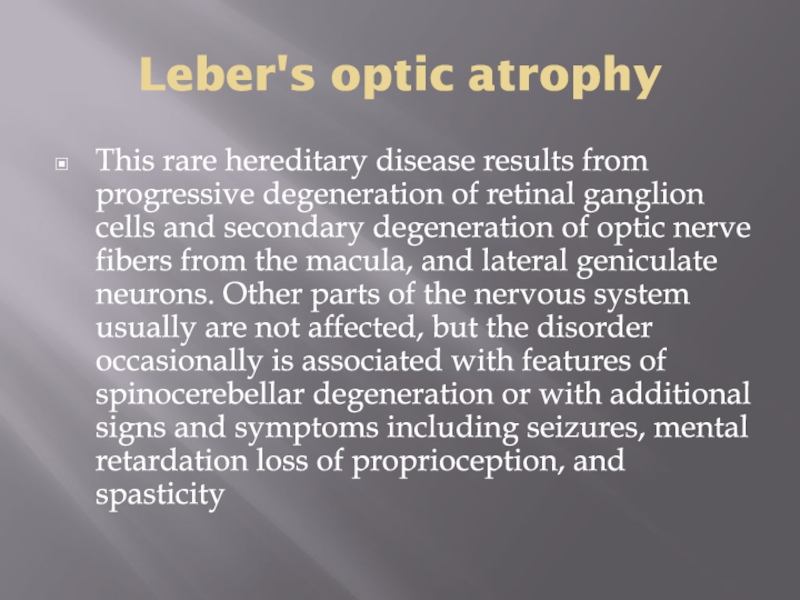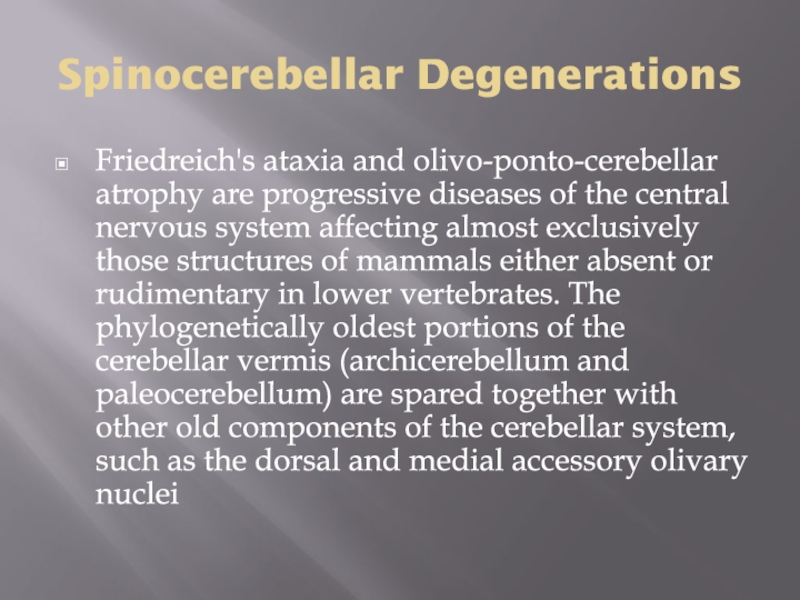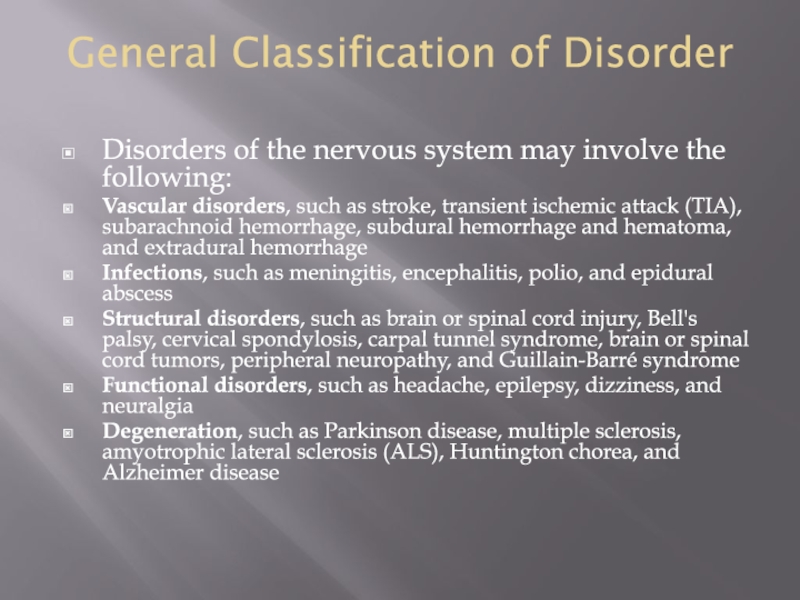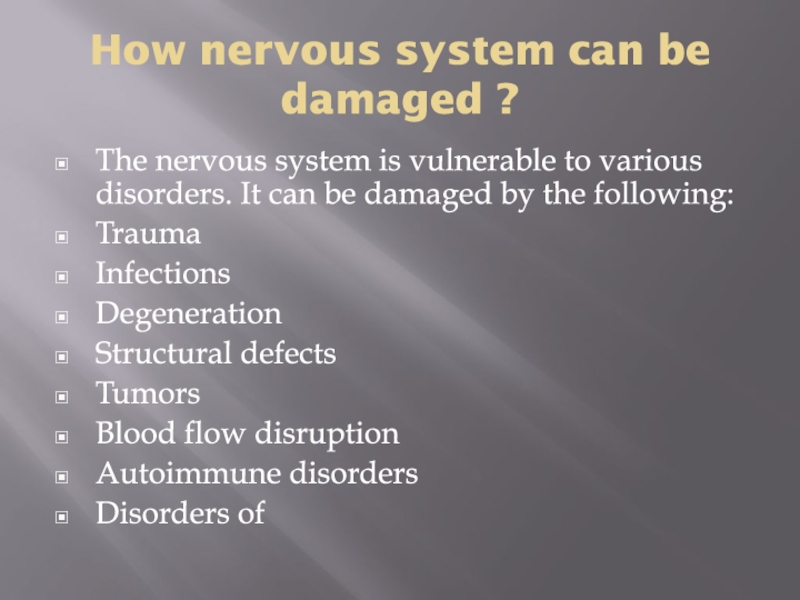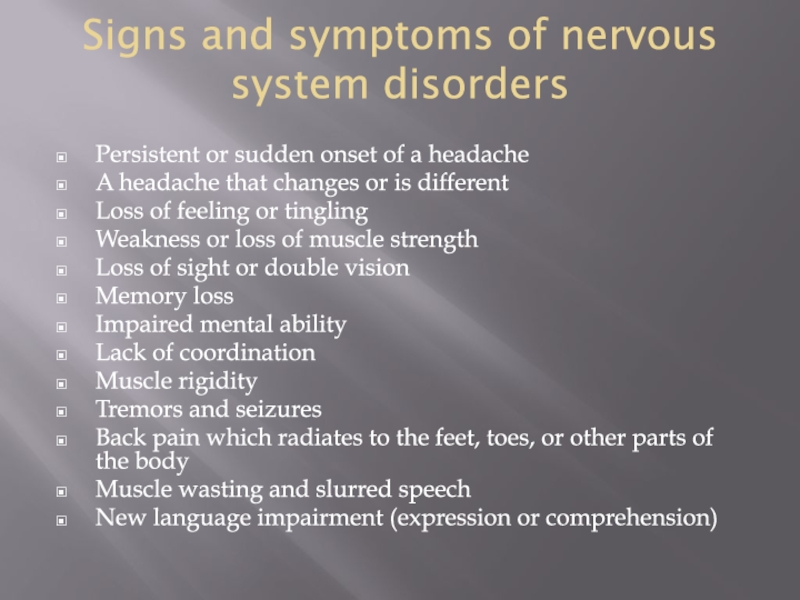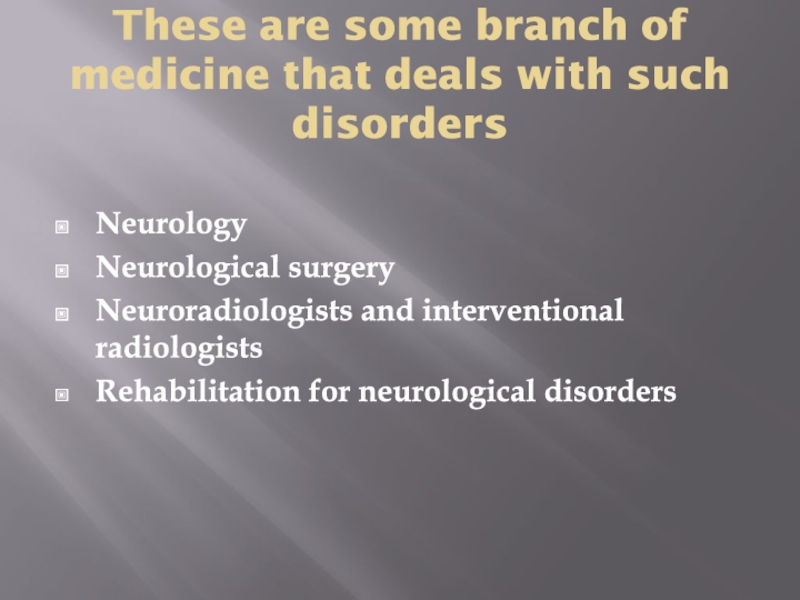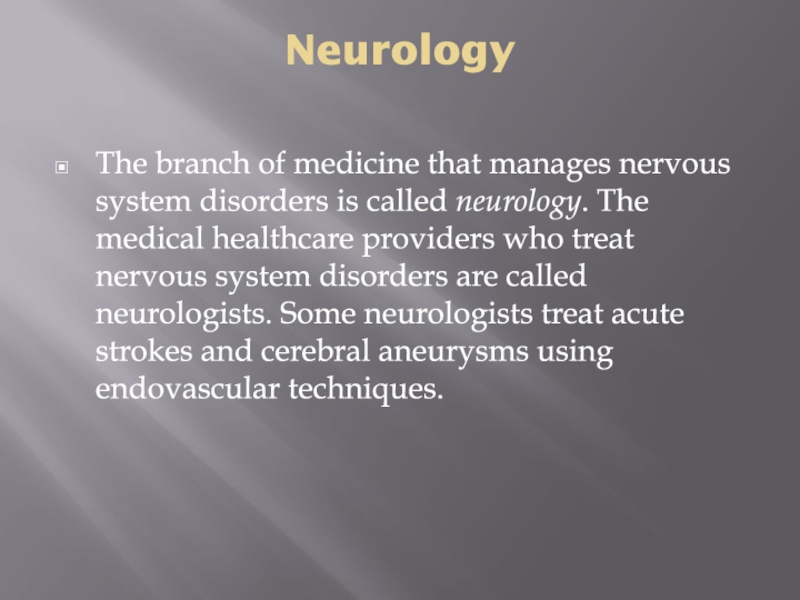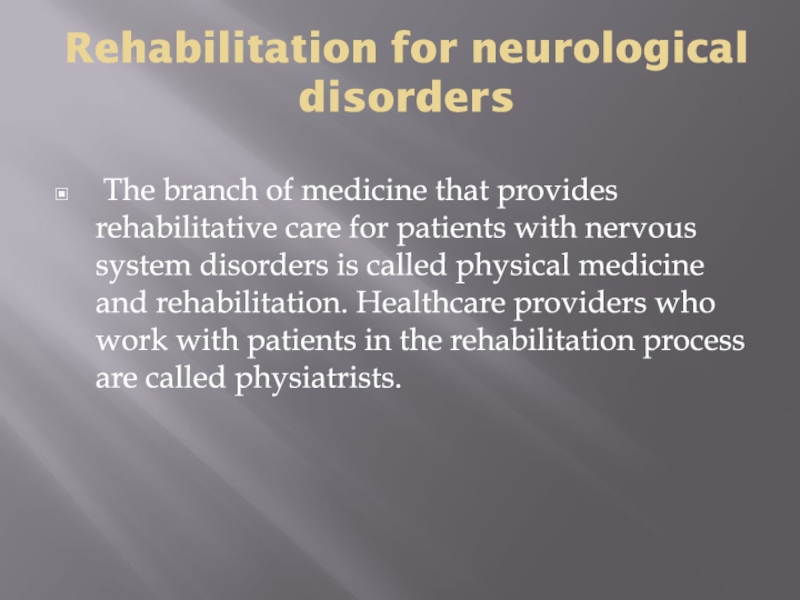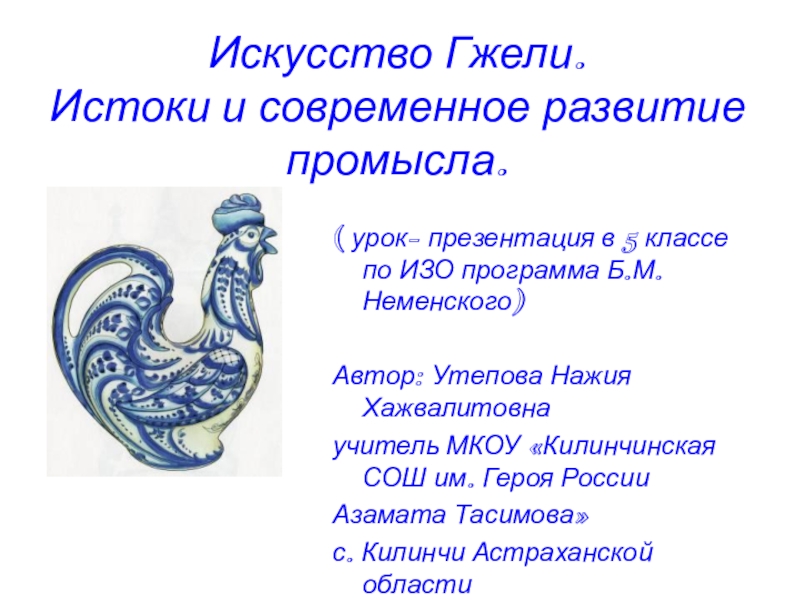Разделы презентаций
- Разное
- Английский язык
- Астрономия
- Алгебра
- Биология
- География
- Геометрия
- Детские презентации
- Информатика
- История
- Литература
- Математика
- Медицина
- Менеджмент
- Музыка
- МХК
- Немецкий язык
- ОБЖ
- Обществознание
- Окружающий мир
- Педагогика
- Русский язык
- Технология
- Физика
- Философия
- Химия
- Шаблоны, картинки для презентаций
- Экология
- Экономика
- Юриспруденция
Phylogenetic disorders of nervous system
Содержание
- 1. Phylogenetic disorders of nervous system
- 2. Nervous SystemIntroduction to the Nervous System
- 3. Like other systems in
- 4. Слайд 4
- 5. Слайд 5
- 6. Phylogenetic Evolution of Nervous SystemAt the cellular
- 7. Nervous systems are found in most multicellular
- 8. Highly Complex Nervous System
- 9. Phylogenetic DisorderA few human diseases may be
- 10. Rare Disorder of Nervous SystemKrabbe's leukodystrophy olivopontocerebellar atrophy Friedreich's ataxia Pick's disease Leber's optic atrophyDandy-Walker Malformation
- 11. Krabbe's leukodystrophyKrabbe's disease is a hereditary progressive
- 12. Leber's optic atrophyThis rare hereditary disease results
- 13. Spinocerebellar DegenerationsFriedreich's ataxia and olivo-ponto-cerebellar atrophy are
- 14. General Classification of Disorder Disorders of the
- 15. How nervous system can be damaged ?The
- 16. Signs and symptoms of nervous system disorders
- 17. These are some branch of medicine that
- 18. Neurology The branch of medicine that manages
- 19. Rehabilitation for neurological disorders The branch of
- 20. Thank You
- 21. Скачать презентанцию
Nervous SystemIntroduction to the Nervous System The nervous system is the major controlling, regulatory, and communicating system in the body. It is the center of all mental activity including thought, learning, and memory.
Слайды и текст этой презентации
Слайд 1Phylogenetic disorders of nervous system
Guided by- Phd.Anna Zhukova
Created by- Darbar
Raj Pravinkumar
Слайд 2Nervous System
Introduction to the Nervous System
The nervous system is
the major controlling, regulatory, and communicating system in the body. It is
the center of all mental activity including thought, learning, and memory. Together with the endocrine system, the nervous system is responsible for regulating and maintaining homeostasis. Through its receptors, the nervous system keeps us in touch with our environment, both external and internal.Слайд 3 Like other systems in the body, the
nervous system is composed of organs, principally the brain, spinal cord, nerves,
and ganglia. These, in turn, consist of various tissues, including nerve, blood, and connective tissue. Together these carry out the complex activities of the nervous system.The various activities of the nervous system can be grouped together as three general, overlapping functions:
Sensory
Integrative
Motor
Слайд 6Phylogenetic Evolution of Nervous System
At the cellular level, the nervous
system is defined by the presence of a special type
of cell, called the neuron, also known as a "nerve cell". Neurons have special structures that allow them to send signals rapidly and precisely to other cells. They send these signals in the form of electrochemical waves traveling along thin fibers called axons, which cause chemicals called neurotransmitters to be released at junctions called synapses. A cell that receives a synaptic signal from a neuron may be excited, inhibited, or otherwise modulated. The connections between neurons can form neural pathways, neural circuits, and larger networks that generate an organism's perception of the world and determine its behavior. Along with neurons, the nervous system contains other specialized cells called glial cells (or simply glia), which provide structural and metabolic support.Слайд 7Nervous systems are found in most multicellular animals, but vary
greatly in complexity. The only multicellular animals that have no
nervous system at all are sponges, placozoans, and mesozoans, which have very simple body plans. The nervous systems of the radially symmetric organisms ctenophores (comb jellies) and cnidarians (which include anemones, hydras, corals and jellyfish)consist of a diffuse nerve net. All other animal species, with the exception of a few types of worm, have a nervous system containing a brain, a central cord (or two cords running in parallel), and nerves radiating from the brain and central cord. The size of the nervous system ranges from a few hundred cells in the simplest worms, to around 300 billion cells in African elephants.Слайд 9Phylogenetic Disorder
A few human diseases may be viewed from a
phylogenetic perspective. Some metabolic or degenerative diseases selectively affect recently
evolved or exclusively mammalian structures of the brain and spare the older structures. Some pathologic conditions in man are similar to normal anatomy in other species, although the mechanisms may differ. Congenital muscle fiber-type disproportion in rodents, Dandy-Walker cyst in birds, and agenesis of the corpus callosum in marsupials are representative of this category. Loss of basal dendritic spines from pyramidal cells in Pick's disease is reminiscent of certain large neurons normally found in the cortex of reptiles. Changes in metabolism in the evolution of mammals in general and of man in particular may explain some aspects of phylogenetic diseases. Some potential examples are the shift from predominantly phospholipids to galactolipids in myelin composition as mammals evolved, and the greater toxicity of cyanide and other poisons of oxidative metabolism in mammals than in other vertebrates because of less reliance on anaerobic metabolism as an alternative energy source.Слайд 10Rare Disorder of Nervous System
Krabbe's leukodystrophy
olivopontocerebellar atrophy
Friedreich's ataxia
Pick's disease
Leber's optic atrophy
Dandy-Walker Malformation
Слайд 11Krabbe's leukodystrophy
Krabbe's disease is a hereditary progressive neurologic disease of
infancy related to deficiencies of galactocerebrosidebeta-galactosidase and psychosine galactosidase.The resultant
accumulation of galactocerebroside and psychosine produces death of myelin-forming cells and degeneration of white matter of the central nervous system and of peripheral nervesСлайд 12Leber's optic atrophy
This rare hereditary disease results from progressive degeneration
of retinal ganglion cells and secondary degeneration of optic nerve
fibers from the macula, and lateral geniculate neurons. Other parts of the nervous system usually are not affected, but the disorder occasionally is associated with features of spinocerebellar degeneration or with additional signs and symptoms including seizures, mental retardation loss of proprioception, and spasticityСлайд 13Spinocerebellar Degenerations
Friedreich's ataxia and olivo-ponto-cerebellar atrophy are progressive diseases of
the central nervous system affecting almost exclusively those structures of
mammals either absent or rudimentary in lower vertebrates. The phylogenetically oldest portions of the cerebellar vermis (archicerebellum and paleocerebellum) are spared together with other old components of the cerebellar system, such as the dorsal and medial accessory olivary nucleiСлайд 14General Classification of Disorder
Disorders of the nervous system may involve
the following:
Vascular disorders, such as stroke, transient ischemic attack (TIA),
subarachnoid hemorrhage, subdural hemorrhage and hematoma, and extradural hemorrhageInfections, such as meningitis, encephalitis, polio, and epidural abscess
Structural disorders, such as brain or spinal cord injury, Bell's palsy, cervical spondylosis, carpal tunnel syndrome, brain or spinal cord tumors, peripheral neuropathy, and Guillain-Barré syndrome
Functional disorders, such as headache, epilepsy, dizziness, and neuralgia
Degeneration, such as Parkinson disease, multiple sclerosis, amyotrophic lateral sclerosis (ALS), Huntington chorea, and Alzheimer disease
Слайд 15How nervous system can be damaged ?
The nervous system is
vulnerable to various disorders. It can be damaged by the
following:Trauma
Infections
Degeneration
Structural defects
Tumors
Blood flow disruption
Autoimmune disorders
Disorders of
Слайд 16Signs and symptoms of nervous system disorders
Persistent or sudden onset
of a headache
A headache that changes or is different
Loss of
feeling or tinglingWeakness or loss of muscle strength
Loss of sight or double vision
Memory loss
Impaired mental ability
Lack of coordination
Muscle rigidity
Tremors and seizures
Back pain which radiates to the feet, toes, or other parts of the body
Muscle wasting and slurred speech
New language impairment (expression or comprehension)
